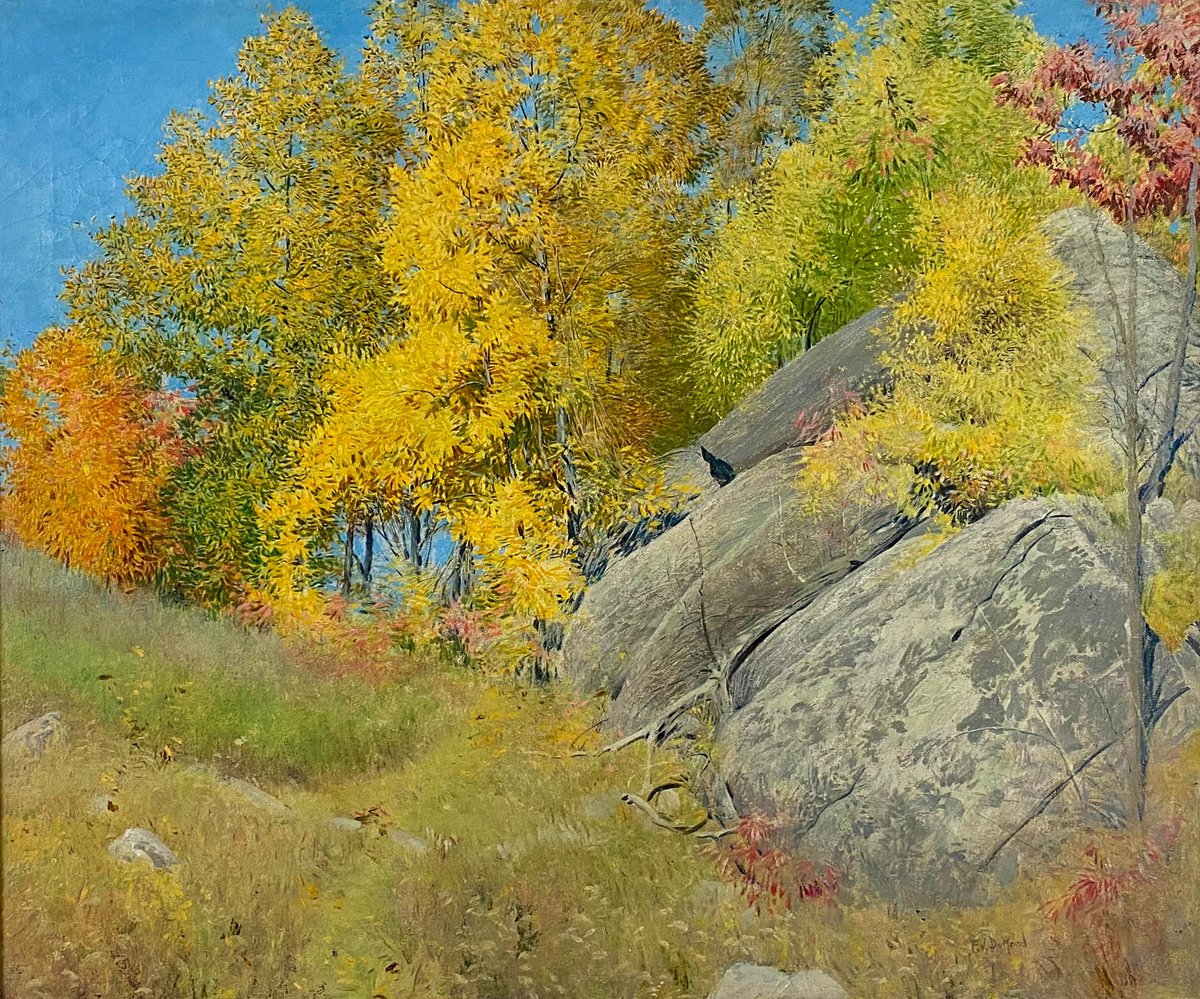Artists
Frank Vincent Dumond
American, 1865-1931Born in Rochester, New York in 1865, Frank DuMond left his work as an illustrator at age 23 to study in the rigorous classical atelier tradition of the Academie Julian Paris in 1888. Upon his return to New York in 1892, DuMond embarked on a painting and teaching term at the Art Students League spanning nearly six decades until his death.
A painter of diverse talents, he was an accomplished landscape, portrait and still life painter, muralist, and leader of the Tonalist then Impressionist art colonies of Lyme, Connecticut. In particular, DuMond was noted for his use of landscape green. American Impressionist expert William H. Gerdts wrote of DuMond, “As one might speak of Velazquez’s blacks, one must speak of DuMond’s greens.” Scholars have described him as a deft painter of the American Impressionist landscape and the figure, but he will perhaps be remembered as among the most outstanding educators in American art history. Though an accomplished painter, he is said to have considered himself more of an educator than an artist.
By all accounts, DuMond is described by his students as a man whose art and teaching methods were based on deeply held religious and philosophical beliefs. One student recalls, “There were occasions when DuMond revealed a clear intent to educate us on a deeper level than might casually be associated with painting.” His students remember him fondly as “a genial, generous, and perceptive instructor…whose warmth and kindness pervaded everything he did.” Under his tutelage, many prominent American artists were brought to recognition, including Georgia O’Keeffe, Norman Rockwell, and John Marin. Still other protégés of DuMond renown became influential teachers, such as Baroque-style painter Frank Mason, whose influence emerged in New York at the Art Students League; and Arthur Maynard and Alban Albert, whose influences emerged at the Ridgewood Art Institute to form another branch of DuMond student legacy.
It was in his early training in Paris that he absorbed the influences of his teacher Gustave Boulanger, Benjamin Constant and Jules-Joseph Lefebvre and the Barbizon and increasing popular Impressionist style. In frequent trips to the French countryside, DuMond was disciplined in painting the naturalistic landscape. Many Barbizon School landscape precepts-such as a sublime vision of the natural world, and an interest in the transient effects of light and shade to depict and dramatize it-have been handed down through generations of painters and continue to pervade art theory today.
Dumond’s teaching continues to influence much of our present-day instruction. DuMond students were taught to see the progression of prismatic light flowing from yellow to red to violet on the warm side; and from yellow to green to blue-green to violet on the cool side. One student quotes DuMond as saying “Silently glowing over this whole landscape is a rainbow. You must learn to see it. It is there always, and if you can get hold of that, you have something worth going after.”
Dumond’s historical influence is unmistakable and nowhere is his influence more preserved than in the palette that is taught at the Ridgewood Art Institute. Variations of the palette used by DuMond-consisting of premixed blues, grays, violets and greens in tonal progression from cadmium yellow to red are still used by many instructors at the Ridgewood Art Institute and by artists around the country.


